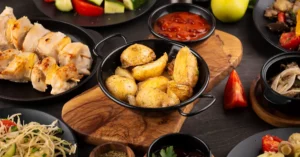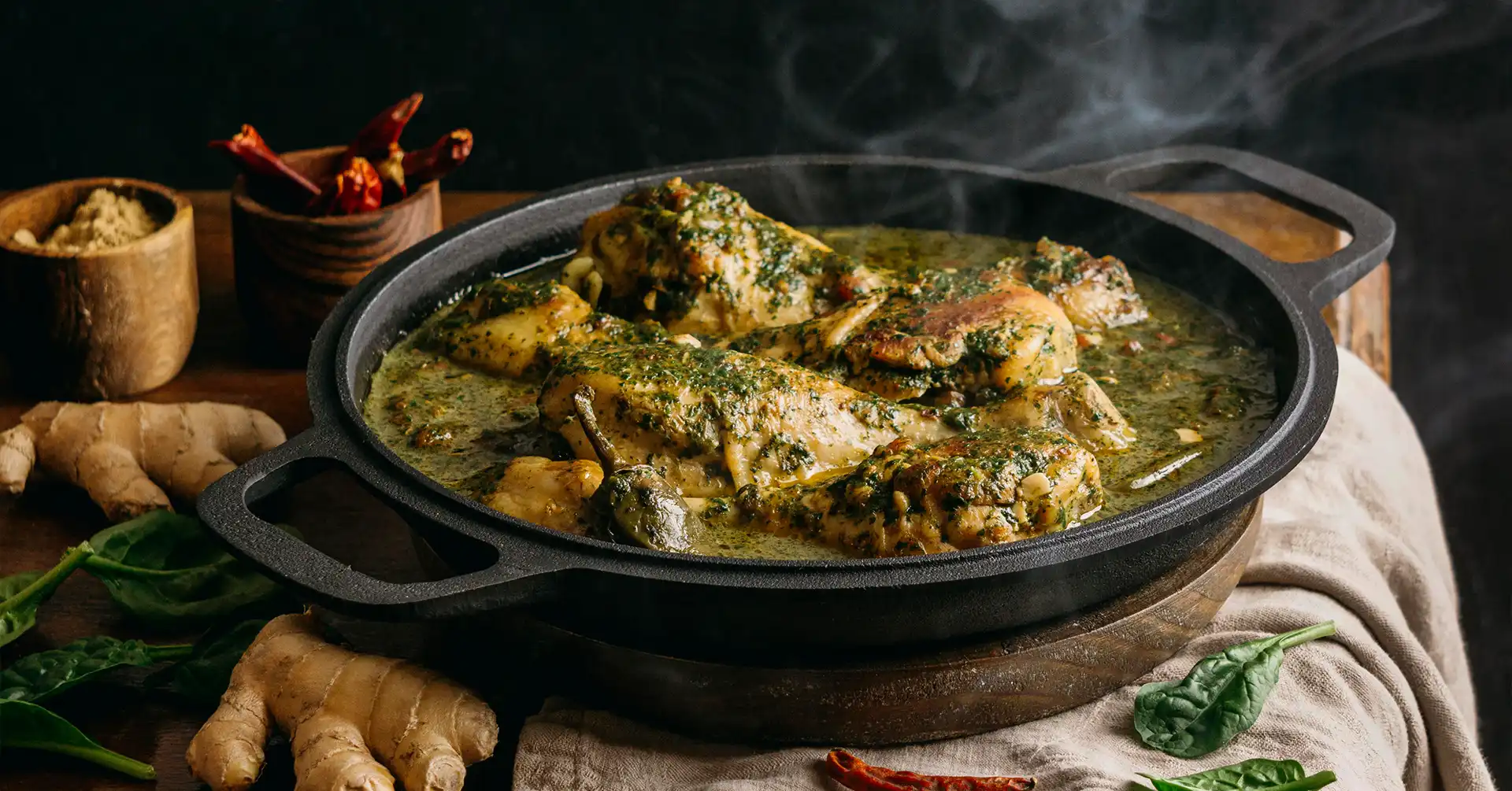Filipino cuisine stands as a testament to the rich tapestry of cultures woven into the Philippines’ culinary heritage. Rooted in a diverse history of indigenous traditions, Chinese influences, Spanish colonization, and native flavors, Traditional Filipino Dishes showcase an array of delectable and unique culinary creations.
Influences on Filipino Food Culture
The influences on Filipino food culture are as varied as the archipelago’s geography. From the vibrant spices of Chinese cuisine to the savory depth brought by Spanish flavors, the fusion of these elements has birthed an extraordinary array of dishes. Traditional Filipino Dishes not only reflect a convergence of these diverse influences but also tell the stories of generations, making Filipino cuisine a delightful journey through time and taste.
Traditional Filipino Dishes
Filipino cuisine boasts a rich tapestry of flavors, blending diverse influences from China, Spain, and indigenous cultures. These influences have given birth to a range of delectable Traditional Filipino Dishes, each telling a unique culinary tale. Here are some iconic examples:
Cassava Cake: A Traditional Filipino Dessert
Cassava cake is a beloved Traditional Filipino Dish made from cassava flour and coconut milk. This dessert, with its origins deeply rooted in Filipino culture, features a delightful blend of grated cassava, sugar, and coconut milk, creating a rich and moist cake. Often baked until golden brown, Cassava Cake is a popular choice for celebrations and gatherings, offering a taste of tradition and sweetness in every bite.
Lumpia: Chinese-Influenced Deep-Fried Spring Rolls
Among the quintessential Traditional Filipino Dishes, Lumpia stands out as a beloved appetizer. These deep-fried spring rolls, influenced by Chinese culinary techniques, are filled with a tantalizing mixture of minced meat and finely chopped vegetables, creating a perfect harmony of textures and flavors.
A Culinary Adventure: Exploring Unique Cuisines Around the World
Venturing into the world’s kitchens offers a tantalizing exploration of unique flavors and cooking styles. From the bustling street markets of Bangkok to the aromatic spice bazaars of Marrakech, every locale tells a flavorful story. Amidst this global odyssey, Traditional Filipino Dishes emerge as a compelling chapter, weaving a tale of Chinese, Spanish, and Native influences that have shaped Filipino cuisine over centuries.
Foodie Inspiration: Trying International Delicacies and Flavors
For food enthusiasts seeking inspiration, the world is an abundant source of culinary wonders. Experiencing international delicacies and flavors can broaden one’s palate and deepen their appreciation for the art of cooking. Among these delectable discoveries, Traditional Filipino Dishes offer a unique and vibrant experience, inviting foodies to savor the harmonious blend of tastes and textures that characterize Filipino gastronomy. From the savory allure of Adobo to the refreshing sweetness of Halo-Halo, Filipino cuisine beckons adventurous eaters on a journey of delightful encounters and unforgettable tastes.
Pancit: Chinese-origin noodles with Varied Meat and Vegetables
Another staple in the realm of Traditional Filipino Dishes is Pancit, drawing its origins from Chinese cuisine. These noodles, often intertwined with an assortment of meats and vegetables, showcase the Filipino penchant for creating hearty and satisfying meals. The term ‘Pancit’ finds its roots in the Hokkien word ‘pian e sit,’ signifying ‘something conveniently cooked,’ capturing the essence of this adaptable dish.

Balut: Filipino Street Food Delicacy – Duck Embryo
Balut, a quintessential Traditional Filipino Dish, stands as a unique street food delicacy in Filipino culinary heritage. This daring dish consists of a fertilized duck embryo, incubated for a specific duration, then boiled and served in its shell. Despite its initial shock factor, balut is a popular snack enjoyed by locals and adventurous food enthusiasts alike. Its taste is a delicate balance of savory and slightly gamey flavors, making it a truly distinctive experience for those seeking an authentic taste of Filipino street food culture.
Turon: Sweet Banana Spring Rolls, Often with Jackfruit, Wrapped in Crispy Wrapper
Another delightful addition to the array of Traditional Filipino Dishes is Turon, a beloved dessert and snack option in the Philippines. These sweet banana spring rolls encapsulate the essence of Filipino flavors. Ripe bananas, and sometimes jackfruit, are coated in brown sugar and wrapped in thin spring roll wrappers. The rolls are then deep-fried until golden and crispy, creating a harmonious blend of textures—crunchy on the outside and soft and sweet on the inside. Turon offers a delightful combination of flavors, making it a popular choice for satisfying sweet cravings in Filipino cuisine.
Chicharon: Spanish-influenced crispy Pork Rinds Snack
Chicharon, with its Spanish influence, offers a satisfying crunch that Filipinos adore. Whether made from pork, chicken, beef, or mutton, these fried pork rinds are a popular snack, often enjoyed alongside a refreshing beverage.
Chicken Adobo: Spanish-Influenced Slow-Cooked Chicken Dish
Chicken Adobo is a culinary gem among Traditional Filipino Dishes, reflecting the enduring Spanish influence on Filipino gastronomy. This dish, cherished for its tender, slow-cooked chicken infused with vinegar, crushed garlic, soy sauce, and black pepper, embodies the artistry of Filipino cooking. The distinct flavors of Adobo signify the seamless fusion of Spanish and indigenous Filipino culinary traditions.

Leche Flan: Spanish-Influenced Creamy Caramel Custard Dessert
No exploration of Traditional Filipino Dishes is complete without savoring the exquisite Leche Flan. This decadent dessert, with its velvety smooth custard base and luscious caramel topping, showcases the Filipino sweet tooth. The term ‘Leche Flan,’ derived from Spanish, translates to ‘milk flan’ in English, underscoring its Spanish influence while highlighting the ingenuity of Filipino dessert-making.
Kare-Kare: Native Filipino Stew with Oxtail and Peanut Sauce
Kare-Kare is a remarkable example of a Native Filipino stew that showcases the rich tapestry of Filipino flavors. This dish features tender oxtail and a thick peanut sauce, creating a harmonious blend of savory and nutty notes that tantalize the taste buds.
Sisig: Spanish-influenced spicy Pork Dish with Vinegar and Calamansi
Sisig is another gem among Traditional Filipino Dishes, drawing influence from Spanish culinary traditions. This spicy pork dish is prepared by marinating pig head and liver in vinegar, soy sauce, calamansi juice, and chili peppers. The resulting combination of flavors and textures is an explosion of taste that’s a favorite among Filipino food enthusiasts.
Sinigang: Native Filipino Sour and Savory Stew with Tamarind
Sinigang represents the epitome of Native Filipino culinary expertise. This sour and savory stew features a medley of ingredients, including onions, tomatoes, eggplant, spinach, ginger, and fish sauce, with tamarind as the key souring agent. Sinigang’s unique flavor profile is a testament to the Philippines’ love for blending contrasting tastes into a harmonious dish.

Arroz Caldo: Embracing the Traditional Filipino Flavors
Arroz Caldo is a quintessential Traditional Filipino Dish that exemplifies the country’s culinary heritage. This hearty chicken and rice porridge, influenced by both Chinese and Spanish cuisines, is simmered to perfection with ginger, chives, and occasionally saffron, creating a warm and comforting dish. Arroz Caldo, literally translating to ‘rice soup’ in English, not only showcases the Filipino penchant for savory comfort food but also reflects the multicultural influences woven into Filipino gastronomy.
Halo-Halo: Indulging in the Tradition of Filipino Desserts
Halo-Halo, meaning ‘mix-mix’ in Filipino, is a vibrant and colorful Traditional Filipino Dessert that captures the essence of Filipino creativity and culinary tradition. This delightful shaved ice dessert features a medley of ingredients, including fruits, jellies, beans, and sweets, all generously topped with evaporated milk and often a scoop of ice cream. Halo-Halo represents the Philippines’ love for refreshing, indulgent treats, making it a must-try dessert for those seeking a taste of traditional Filipino sweets.
Bicol Express: Savoring the Spices of Filipino Cuisine
Bicol Express, a fiery and flavorful Traditional Filipino Dish, showcases the bold and spicy side of Filipino cuisine. This dish, featuring pork, shrimp, or sometimes both, cooked in a rich coconut milk sauce infused with chili peppers, exemplifies the Philippines’ love for spicy flavors. Bicol Express is a testament to the diverse culinary landscape of the country, emphasizing the use of coconut milk and spices in traditional Filipino cooking.
Adobo Flakes: Exploring the Crispy Delights of Filipino Adobo
Adobo Flakes, a crunchy and savory Traditional Filipino Dish, offers a unique twist to the classic Filipino adobo. In this variation, chicken or pork is marinated in adobo sauce, slow-cooked until tender, and then shredded and crisped to perfection. This dish encapsulates the essence of Filipino adobo, a cooking technique that combines vinegar, soy sauce, and spices, resulting in a flavorful and crispy delicacy. Adobo Flakes highlight the adaptability and creativity within traditional Filipino cuisine, making them a popular choice for both casual meals and festive occasions.
Exploring International Cuisines
In the realm of gastronomy, embarking on a culinary adventure is akin to taking a global journey through the heart of cultures. Here, diverse traditions, flavors, and techniques meld into a tapestry of tastes that delight the senses. Amid this vast array of international cuisines, Traditional Filipino Dishes stand out as culinary treasures, representing the rich heritage and multicultural influences of the Philippines.
Conclusion
In the realm of global cuisine, Traditional Filipino Dishes shine as hidden gems, embodying a delightful fusion of Chinese, Spanish, and Native influences. This culinary journey through the heart of the Philippines reveals not just flavors but stories—narratives of multicultural harmony and historical richness. From the crispy perfection of Lumpia to the comforting warmth of Arroz Caldo, each dish encapsulates centuries of tradition, making Filipino cuisine a must-explore adventure for every food enthusiast. So, next time you seek a culinary escapade, let the diverse and delectable offerings of Filipino gastronomy be your guide, promising a savory voyage filled with endless discovery and culinary delight.
Also Read:
Expensive Ice Creams Extravaganza: Top 5 Frozen Delights
German Food Delicacy: Bavaria to Berlin Regional Specialties!
Food in USA: Exploring the Rich Tapestry of American Cuisine






